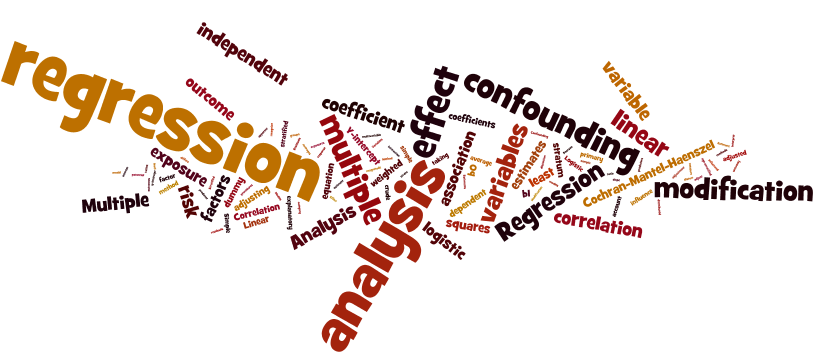
Introduction
Previous modules discussed procedures for estimation and hypothesis testing and focused on whether a given outcome was associated with a single exposure or risk factor. However, many outcomes are influenced by more than a single exposure. There are several reasons for wanting to consider the effects of multiple variables on an outcome of interest.
- To understand the multiple factors that can influence the outcome.
- To recognize and adjust for confounding. If other factors that influence the outcome are unevenly distributed between the groups, these other factors can distort the apparent association between the outcome and the primary exposure of interest; this is what is meant by confounding. When there is confounding, multivariable methods can be used to estimate the association between an exposure and an outcome after adjusting for, or taking into account, the impact of one or more confounding factors (other risk factors). In essence, multiple variable analysis allows us to assess the independent effect of each of the exposures.
- To recognize effect modification. Effect modification occurs when the magnitude of the effect of the primary exposure on an outcome (i.e., the association) differs depending on the level of a third variable. For example, suppose a clinical trial is conducted and the drug is shown to result in a statistically significant reduction in total cholesterol. However, suppose that with closer scrutiny of the data, the investigators find that the drug is only effective in subjects with a specific genetic marker and that there is no effect in persons who do not possess the marker. This is an example of effect modification or "interaction". The effect of the treatment is different depending on the presence or absence of the genetic marker. Multivariable methods can also be used to assess effect modification. This phenomenon of "effect modification" is distinct from confounding. When effect modification is present, it would be misleading to compute an overall estimate of the association because the association is different for those with or without the third factor. A common way of dealing with effect modification is examine the association separately for each level of the third variable. Nevertheless, multiple variable procedures can be used to identify effect modification.
For a more complete discussion of the phenomena of confounding and effect modification, please see the online module on these topics for the core course in epidemiology "Confounding and Effect Modification."
Learning Objectives
After completing this module, the student will be able to:
- Define and provide examples of dependent and independent variables in a study of a public health problem
- Explain the principle of statistical adjustment to a lay audience
- Organize data for regression analysis
- Define and provide an example of confounding
- Define and provide an example of effect modification
- Interpret coefficients in multiple linear and logistic regression analysis


